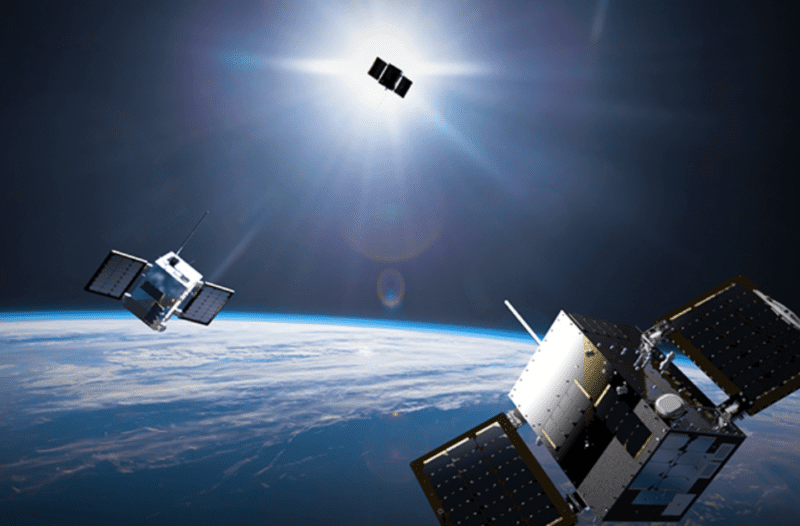HawkEye 360 Prepares to Expand RF Tracking Capabilities With Second Cluster

HawkEye’s second cluster of RF satellites have been deployed to orbit. Photo: HawkEye 360
HawkEye 360 is at an inflection point in its work to bring commercial Radio Frequency (RF) geolocation data to market, as its second-generation cluster is now in-orbit and being prepared for service. The second cluster of three RF tracking satellites launched on SpaceX’s Transporter-1 rideshare mission over the weekend, and will expand the company’s ability to provide data and insights to its target customers, the U.S. and international governments.
HawkEye confirmed on Jan. 24 after the Transporter-1 mission that it has established communications with the satellites. These satellites will now be tested, commissioned, and moved into their final formation.
The company was the first to offer commercially available RF tracking data after it launched its Pathfinder cluster of three satellites in 2018. These satellites can track and geo-locate RF signals — anything that emits a signal across a broad range of emitters from VHF marine radios, UHF push-to-talk radios, maritime radar systems, AIS beacons, and L-band satellite devices. One example of this in action is tracking X-band and S-band radar on dark maritime vessels.
According to a recent report by Quilty Analytics, five companies have announced plans to build commercial RF mapping networks — HawkEye 360, Aurora Insight, Horizon Technology, Kleos Space, and Unseenlabs. These companies are expected to launch 50-60 satellites over the next two years.
CEO John Serafini told Via Satellite the Pathfinder mission was a “phenomenal” success in introducing customers to this type of capability, and it proved there was untapped demand for RF tracking.
“We’ve done meaningful revenue with our initial base of anchor customers. We have well over a dozen anchor customers who have been sharing with us their requirements, and their specific operating challenges,” Serafini said. “Pathfinder served the function of testing and evaluation, research and development, customer engagement, and education.”
Serafini said most of HawkEye’s customers are defense, intelligence, and security, in both the U.S. government and international governments, and this is by design. “To be successful with selling to governments you have to be all in. You can’t minor in U.S. government sales,” he said.
Some customers value that the data can augment national systems, and that it can be shared because the data is not classified. HawkEye also offers processing and data analytics for customers wanting geospatial intelligence, to track specific signals of interest. International customers have significant demand as well.
“Customers who are in the international domain — the Five Eye countries, allies in Asia Pacific and Europe and in the Middle East — desperately need access to high quality RF data, but have never before had their own organic access. They now can use this to protect their borders, to protect their interests, and to understand adversary implications of actions,” he said.
That focus has paid off, and HawkEye recently received a deal to support a commercial RF geospatial intelligence pilot program for the U.S. National Geospatial-Intelligence Agency (NGA). The company also participated in the U.S. Air Force AFWERX Space Challenge and received a commercial imagery study from the National Reconnaissance Office (NRO).
Serafini also talked about future commercial applications, such an international spectrum inventory. He said the company’s goal is to have a customer base made up of the U.S. government, international governments, and commercial customers, all in equal parts, and expects to reach that in the next three to four years.
The second cluster that just launched offers roughly ten times the capability of the Pathfinder cluster, Serafini said, with double the collection capacity, a more capable software-defined radio, and a more robust antenna configuration. HawkEye is working to launch five additional clusters — 15 satellites — over the next 18 months to establish its initial constellation, with the goal of offering a global revisit rate of less than one hour.